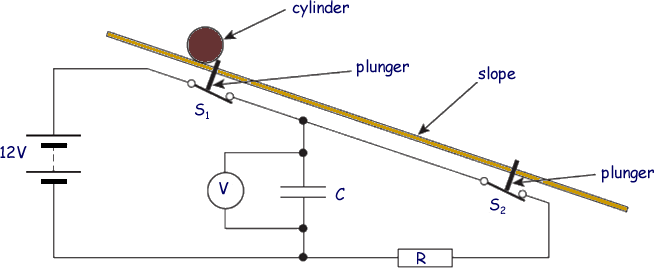Capacitor Questions Q7. A student was required to design an experiment to measure the acceleration of a heavy cylinder as it rolled down an inclined slope of constant gradient. He suggested an arrangement that would make use of a capacitor-resistor discharge circuit to measure the time taken for the cylinder to travel between two points on the slope. The principle of this arrangement is shown in the diagram below.
S1 and S2 are two switches that would be opened in turn by plungers as the cylinder passed over them. Once opened, the switches would remain open. The cylinder would be released from rest as it opened S1. The pd across the capacitor would be measured by the voltmeter.
(6 marks)
(3 marks)
(2 marks) (Total 11 marks) |
Follow me...
|






